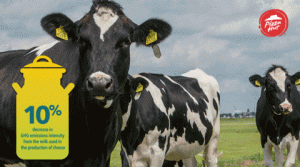
The lawsuit, filed in Vermont U.S. District Court, alleges that DFA and other cooperatives agreed not to compete for each other’s farmer-members, conspired to share payment information in order to discourage competition and depress prices, and maintained those low prices market-wide by entering into supply agreements with Dean Foods and other dairy processors.
In its Statement of Interest for the brief, the DOJ makes three main arguments:
The allegations against DFA in the case are not sheilded by the Capper-Volstead Act from antitrust laws. In other words, DFA cannot hide behind its technical status as a cooperative. If there is evidence that DFA conspired with nonexempt parties, (non-cooperatives) to act “anti-competitively against other farmers,” then “claims at issue in this case fall outside the heartland of Capper Volstead protection.” The DOJ states, “To the extent … that DFA, even when acting as a milk marketing cooperative, made agreements with non-cooperatives that would violate section 1 of the Sherman Act,” that “DFA had monopsony power and used it,” and that “it would be inconsistent with the (Capper-Volstead) Act to allow a monopsony to use (Capper-Volstead) as a shield.”
The Capper-Volstead Act does not insulate exclusionary acts from the antitrust laws prohibiting monopsonization. Basically, this section argues that the definition of “predatory practices” should be applied broadly as violations of section 2 of the Sherman Act, and are “therefore outside the protection of the Capper Volstead Act.”
The Defendants (DFA) bear the burden of proof that they are protected by the Capper-Volstead Act. Since it is DFA’s claim that they are protected as a cooperative by Capper-Volstead, they must show proof of such claims. This argument is extremely significant, because it shifts the burden of proof away from the farmers.
According to the Organization for Competitive Markets, the Statement of Interest provided by DOJ is perhaps one of the most relevant interpretations of the Capper-Volstead Act’s intent and purpose that they have seen. The DOJ arguments clearly demonstrate that farmer and producer protection was one of the main reasons for passage of the Clayton and Sherman Acts.
Background on the Case
In 2016, DFA paid $50 million to dairy farmers to settle a class-action lawsuit that alleged DFA and its marketing arm, Dairy Marketing Services LLC, had conspired to monopsonize the fluid milk market in the Northeast. A significant outcome of that settlement was that a group of 116 farmers in the Northeast opted out of that settlement, instead working together to bring a separate lawsuit against DFA.
The lawsuit, filed in Vermont U.S. District Court, alleges that DFA and other cooperatives agreed not to compete for each other’s farmer-members, conspired to share payment information in order to discourage competition and depress prices, and maintained those low prices market-wide by entering into supply agreements with Dean Foods and other dairy processors.
In September of 2019, U.S. District Judge Christina Reiss issued a 58-page ruling that allowed the case to move forward. The judge ruled that the farmers had provided “admissible evidence from which a rational jury could conclude that DFA management favored growth of its commercial operations and empire building over the interests of its farmer-members.”
The case was slated for trial on July 1, 2020, but was postponed due to the Covid-19 pandemic. A jury trial currently is scheduled to begin on September 30, 2020























